rover
Latest

Airbus is designing a Mars rover to return soil samples
Back in April, NASA and the European Space Agency (ESA) agreed to figure out whether it's possible to bring Martian soil samples back to Earth. Now, the ESA has granted Airbus a $5.2 million contract to design a concept for a rover that can collect those samples on the red planet. The space agency has chosen Airbus' team in Stevenage, England, because they're already building the ExoMars rover that's scheduled to head to our neighboring planet in 2021. Unlike ExoMars and all its scientific instruments, the fetch rover's lone task is to find and collect the canisters of samples NASA's Mars 2020 rover prepares and leaves behind. However, that doesn't mean that designing the vehicle would be easy.

Opportunity rover stops responding during Mars dust storm
Things have gone from bad to worse for the Opportunity rover now that it's caught up in a massive Mars dust storm. In an update, NASA revealed that Opportunity didn't respond to a contact attempt. The team now assumes the robotic explorer's batteries have reached a critically low level, and that it's currently in a low power fault mode that shuts off everything but the mission clock. Outside of waking up to check power levels, the rover will stay in this mode unless its solar panels can restore enough energy.
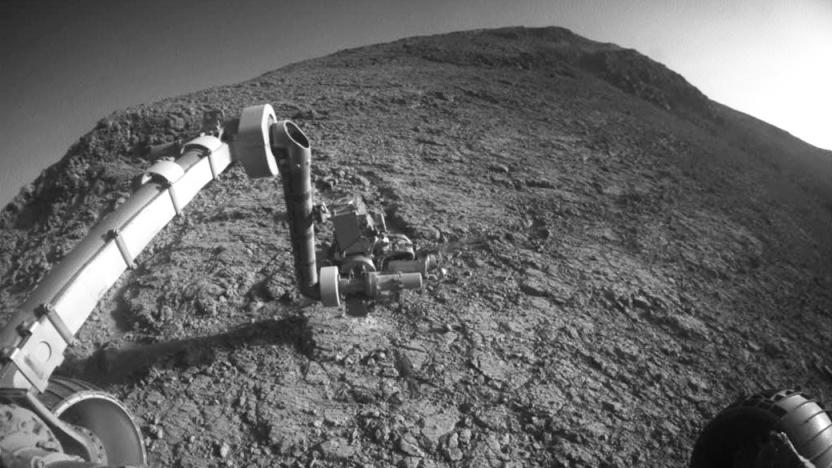
NASA’s Opportunity rover sees its 5,000th day on Mars
This weekend, NASA's Opportunity rover spent its 5,000th day on Mars. While that is a feat in and of itself, it's even more impressive when you consider that it was only planned to last 90 Martian days, or sols. Both Opportunity and its companion rover Spirit were launched towards Mars in 2003, landing on two different parts of the planet in January 2004. Neither were expected to make it through Mars' harsh winter though, which lasts about twice as long as ours and is severely lacking in light, but NASA's team discovered that pointing the rovers towards the north and towards the sun was enough to keep them powered through the winter. Further, making sure the rovers were on north-facing slopes each winter helped to keep them going for years longer than they were ever intended to function.

Wendy’s will deliver your next Baconator through DoorDash
Starting today, you'll be able to get Wendy's delivered right to your door as the chain is now partnering exclusively with DoorDash. At launch, the delivery service is available in 48 markets nationwide. Wendy's and DoorDash piloted the program earlier this year in Columbus, Ohio and Dallas, Texas and the restaurant chain said that the Baconator and Frosty were popular items during the test.
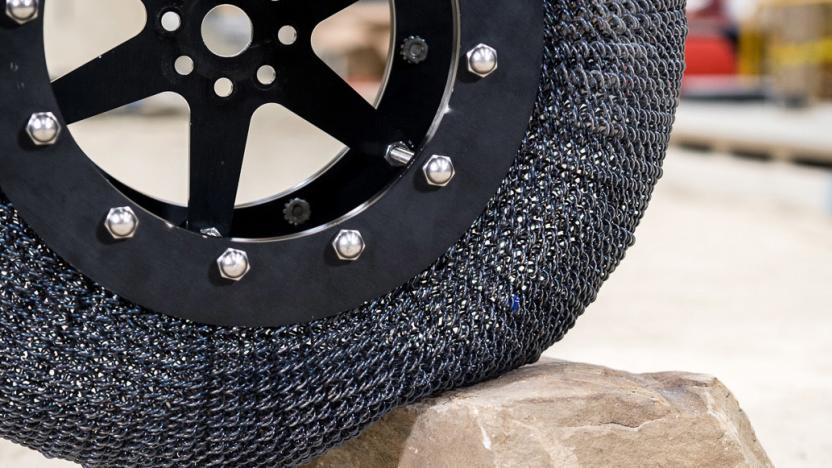
NASA goes back to the middle ages for its rover tire design
The Mars Curiosity rover has been a big success, but NASA's modern tech couldn't save its tires from breaking down in the harsh conditions of Mars. For future missions, the agency has gone back to the age of knights. Based on the principles of chainmail armor, the "Superelastic" tires can withstand more deformation than any other non-pneumatic tire. At the same time, they could potentially withstand extraplanetary abuse and provide better traction for next-generation rovers.
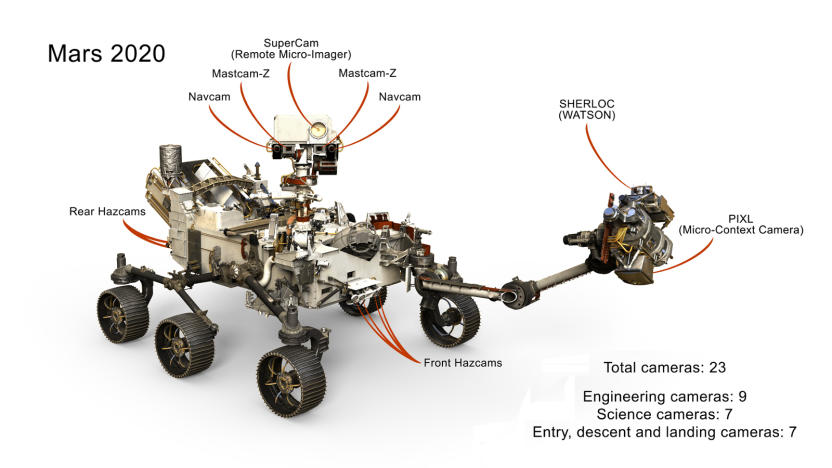
Mars 2020 rover will observe the red planet with 23 eyes
The Mars 2020 rover will be able to show us more of the red planet than any of its predecessors ever did. NASA says the extraterrestrial vehicle will be equipped with 23 cameras, six more than Curiosity's and all a lot more capable. Seven of those "eyes" are tasked with collecting data for scientific experiments, nine are engineering cameras that will keep an eye on its surroundings for navigation and the last seven will capture the rover's descent and landing. Its main camera, however, is Mastcam-Z -- an upgraded version of Curiosity's Mastcam with a 3:1 zoom (hence, "Z") lens the original didn't have.
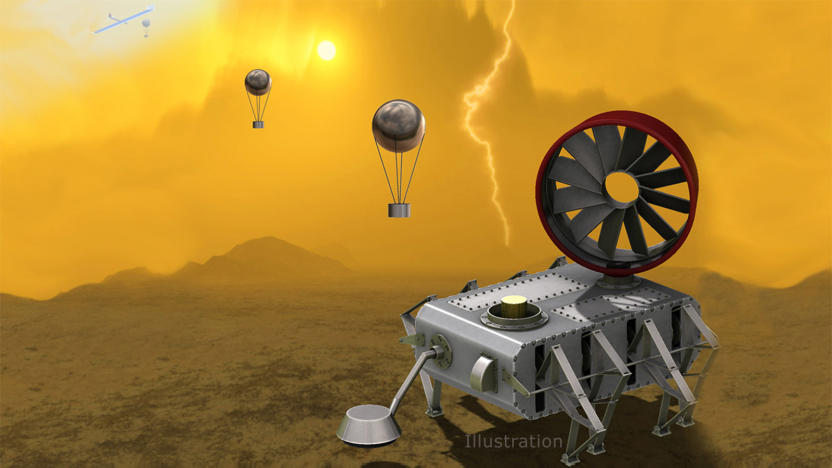
NASA goes Steampunk for its future Venus probes
NASA knows better than any of us that what seems normal today was once science fiction. So, it isn't afraid to bet some cash on some fanciful space projects via the NASA Innovative Advanced Concepts (NIAC) symposium. This year, the agency looked at projects it calls "little more than ideas," including a Venus probe inspired by famed Dutch artist Theo Jansen, the creator of wind-powered "Strandbeests."

Mars Rover’s AI is really good at selecting rocks to analyze
If we truly want to go to Mars, then we really need to know what it's made of -- it's hard to bring everything you need from Earth. NASA's Curiosity Mars rover has been using specialized AI software to zap soil and rocks on the planet this past year to discover what each is made of. The software that guides the rover's efforts is called AEGIS, or Autonomous Exploration for Gathering Increased Science. AEGIS allows the rover to get more science of this nature done while Curiosity is out of contact with its human controllers, according to a new paper published by NASA in Science Robotics.
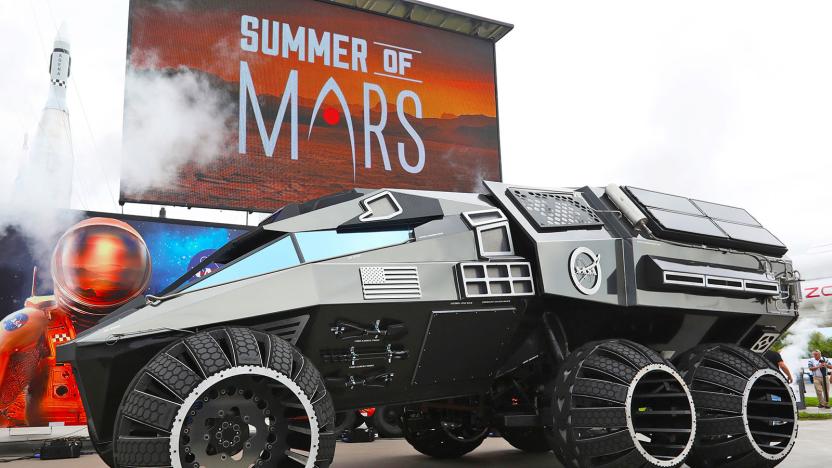
NASA's Mars 2020 concept is perfect for Space Batman
NASA has shown off a futuristic-looking concept of the Mars 2020 rover with a shiny black body and intimidating wheels at the Kennedy Space Center. If you're thinking that it looks like it popped right out of a superhero movie or a shiny video game than an actual vehicle meant to explore the red planet, then you're right. The agency isn't quite done conjuring up a final design for the vehicle: this 28-foot-long machine was actually created as a showpiece for its "Summer of Mars" program. NASA says it might take a couple of elements from this concept, though, perhaps to add a dash of panache to the actual rover.

Mars rover's home crater was a potential hotbed for life
NASA landed the Curiosity rover in Mars' Gale Crater precisely because it promised to be a sort of open book that revealed a lot about the planet's history. Well, scientists have been busy reading... and it looks like the crater had an intriguing past. Two newly published research papers indicate that Gale was a warm lake for for a period of about 700 million years, ending about 3.1 billion years ago. In other words, it was habitable for a very long time. Even then, groundwater persisted for a long time afterwards.
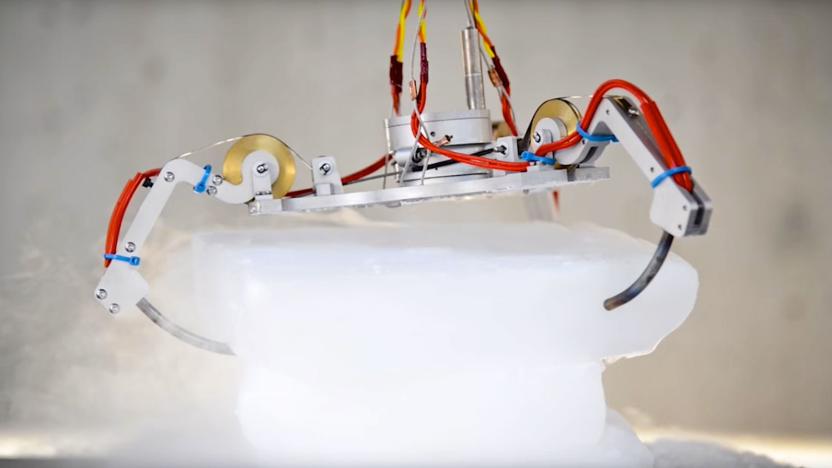
How NASA's future robots will explore frozen worlds
Delivering a rover to the surface of a distant icy world like Jupiter's moons Europa and Titan is only half the challenge. Once on the surface, the robotic explorers will have to contend with intense space radiation, plunging temperatures that drop to hundreds of degrees below zero and miles upon miles of ice before hitting the subsurface oceans that astronomers suggest may contain life. But NASA has a plan.
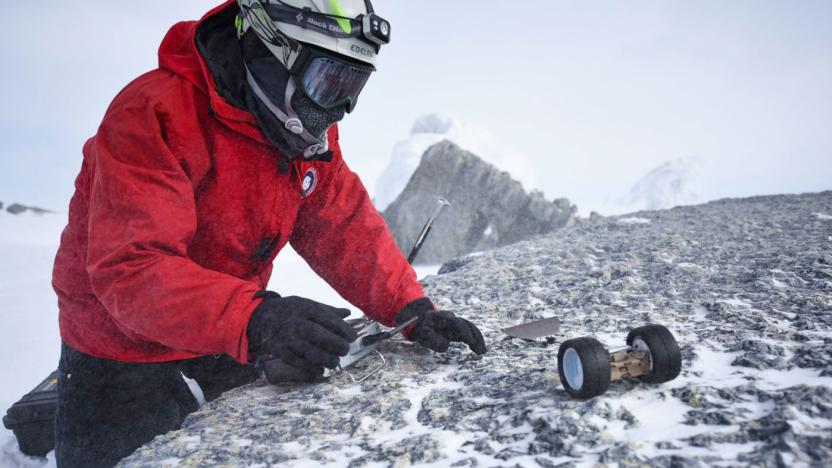
NASA's origami robots can squeeze into places rovers can't
Imagine a Martian rover that can send small robotic minions to crawl into crevices or climb steep slopes -- everywhere a full-sized vehicle can't go to. That's the scenario a team from NASA's Jet Propulsion Laboratory hopes to achieve by developing small origami-inspired robots called Pop-Up Flat Folding Explorer Robots or PUFFERs. They're made of printed circuit boards and can be flattened and stacked on top of each other on the way to their mission. Once they get to the location, they can pop back up and drive away.

NASA tests life-detecting tools for Mars in the Atacama Desert
NASA wanted to find out whether the Mars 2020 rover can truly drill for samples and look for signs of life at the same time. So, a team of scientists spent the whole February testing tools using a practice rover called the KREX-2 in one of the driest places on Earth: the Atacama Desert. It's the perfect location to trial instruments NASA plans to use on Mars, since it's as dry as the red planet and under constant assault from ultraviolet radiation. Microbes in the Atacama live underground or inside rocks -- if there's life on Mars, NASA expects to find it in similar locations.
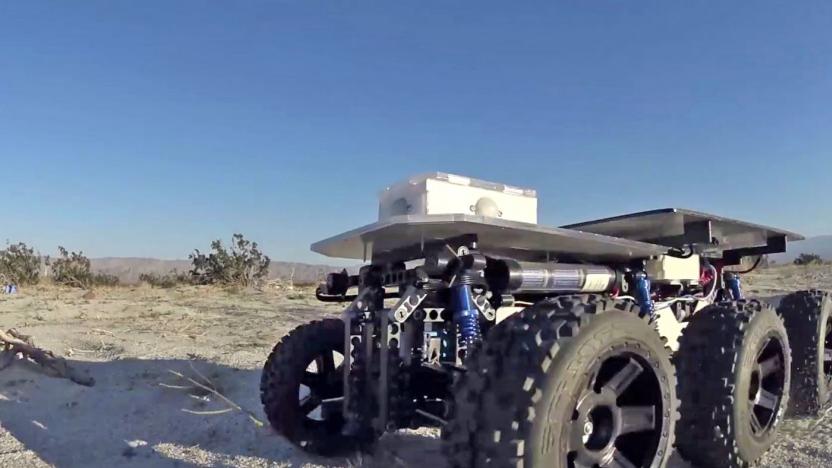
This anti-social robot's only task is to avoid people
Robots are usually created to help us, but that's not always the case. Last week, California's Palm Desert was home to a machine that was different. ShyBot didn't serve us at all, instead -- as its name suggests -- it had a reclusive mission: stay as far away from people as it could.

NASA picks three potential drill sites for Mars 2020
When the Mars 2020 rover reaches the red planet, it will quickly begin drilling for samples from its surface. NASA hasn't picked the exact drill site yet, but it has narrowed its choices down to three during a workshop with scientists in Monrovia, California. The group consulted images and data sent by the Mars Reconnaissance Orbiter before voting for easily accessible locations they believe could have supported life. Jezero crater, which got the most votes, was once an ancient lake comparable to Lake Tahoe. It was connected to a large river that fed it water and sediments, making it an ideal site for the rover's search for signs of life.
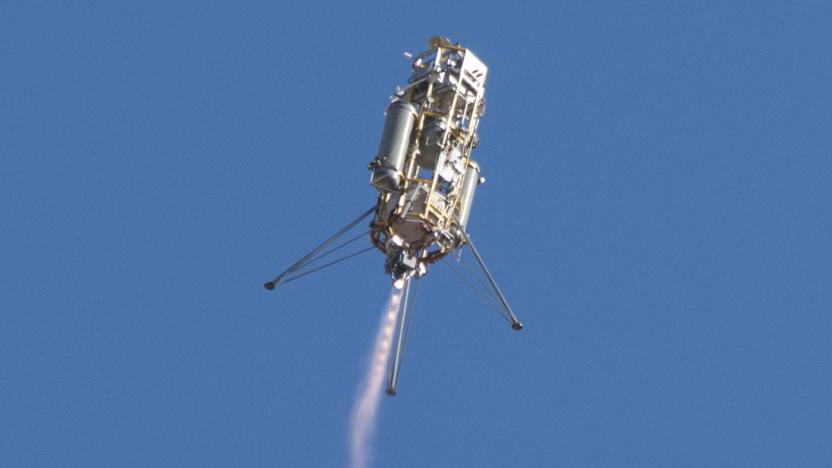
NASA tests Mars 2020 rover's landing camera
The Curiosity and NASA's other Mars rovers had to look for wide-open and flat landing locations to be on the safe side. Mars 2020, however, will have a camera-based navigation system capable of assessing terrains and reacting to potential hazards on the fly, allowing the rover to touch down on complex surfaces its predecessors have yet to explore. That camera is officially called Lander Vision System (LVS), and NASA has recently begun testing its capabilities. The space agency placed it aboard the flight test of an experimental rocket built by Masten Space Systems, a California-based aerospace startup. To be precise, LVS flew as part of a landing technology dubbed the Autonomous Descent and Ascent Powered-flight Testbed.
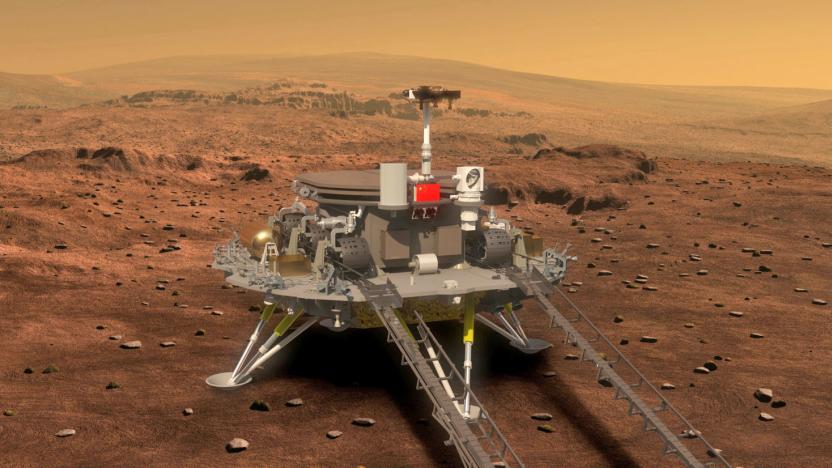
China reveals images and details of its first Mars rover
NASA's next-gen Mars rover might not be the only space vehicle heading to the red planet in 2020. China is apparently planning to deploy a rover of its own by July or August 2020, and the country has just released some mission details and computer-generated images (see above for one) to the public. According to state-run publication Xinhua, mission chief Zhang Rongqiao revealed during a presscon in Beijing that the rover will be ferried to space by a Long March-5 carrier rocket. Seven months after liftoff, the lander will break free from the orbiter to make its way to the planet's equator where the rover will begin its journey.

NASA celebrates Curiosity's fourth year on Mars with a game
The glitch that shut down Curiosity in July was thankfully a temporary issue, else NASA would have mourned its loss rather than celebrating the rover's fourth year on Mars by releasing a game. It's simply called Mars Rover, and it's probably your only chance to pilot Curiosity. Mars Rover has a pretty straightforward gameplay -- you just have to press arrow keys to drive the vehicle and find underground pockets of water -- but it's harder than it seems. The virtual rover's wheels crack and break if they slam hard against rocks or heels, and when they do, it's game over.

The sun finally sets on China's lunar rover
China's Jade Rover has led a pretty interesting life even by the standards of most devices sent to examine another celestial body. It began its tour of duty on the moon back in 2013, died and was resurrected in 2014 before making a huge discovery in 2015. But now, alas, Xinhua News is reporting that China's State Administration for Science, Technology and Industry has confirmed the droid's second and permanent demise.

Curiosity rover can shoot lasers at any rock it wants
Is there anything cooler than sending a robot to Mars to shoot rocks with lasers? Probably not -- which is why NASA is giving the Curiosity rover the ability to shoot even more rocks with lasers. Okay, technically NASA is giving the Martian rover the ability to choose targets for ChemCam analysis. This is a process that uses a laser and telescopic camera to sort out the chemical composition of Martian rocks. Typically, NASA chooses the targets manually, but a new update will allow the rover to collect data autonomously.








